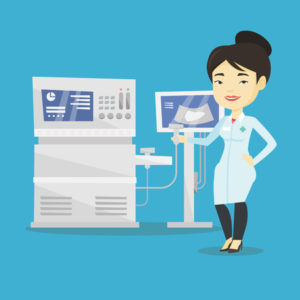
 The prestigious Mayo Clinic estimates that out of 325 million people who live in the US, approximately 100 million suffer from fatty liver disease.
The prestigious Mayo Clinic estimates that out of 325 million people who live in the US, approximately 100 million suffer from fatty liver disease.
The percentages are similar in Europe, the UK, Australia, and India, and because of a worldwide epidemic in both diabetes and obesity, those numbers are in the rise.
That means nearly 1 in 3 adults (and 1 in 5 children) on the planet are afflicted with some form of fatty liver, which adds up to over 2.2 billion people.
What The Heck Is Fatty Liver?
If you have never heard of it, you aren’t alone. Most people have no idea what it is until they get it themselves, or a loved one is diagnosed. It’s often referred to as a silent-killer, and even many doctors are unaware how prevalent it is.
The medical definition of fatty liver is having a liver fat content of over 5%. As we gain weight, some of that fat ends up in our organs, specifically the liver.

Of course, a little liver fat normal, but once it gets above 5%, it’s not only considered unhealthy, it actually becomes dangerous. Now consider that there are people walking around with 10%, even 15% liver fat, and you start to understand the scope of the problem.
Most people receive their initial diagnosis only after they begin to show symptoms, and by that time, the disease has often progressed to the point where it’s causing serious damage to their body.
The Liver Is Your Most Important Organ
Fact is, your liver is the largest internal organ in your body, and arguably the most important.
For example, if your body suffers serious trauma, it will send blood to the liver before it sends blood to the heart, lungs, or even the brain. That’s because the liver keeps all those other organs functioning properly.
It’s primary job is to act as a giant filter, removing toxic and harmful substances out of your bloodstream, so they can be eliminated from your body through your kidneys, colon, and sweat glands. But that’s only the beginning.
Your Liver Manages Over 400 Different Functions
Often referred to as the body’s “Grand Central Station,” your liver supports over 400 different internal processes and functions, including managing your hormones, supporting your immune system, stabilizing your weight, clearing your skin, aiding in digestion, and absorbing the nutrients in your food.
Once the 5% liver fat threshold is reached though, a lot of those processes start to break down and eventually fail.
And since many people are well above that level, they begin to experience serious health issues, including…
- Chronic fatigue, where you constantly feel tired and listless
- Insomnia and difficulty sleeping at night, when you need your rest
- Anger, frustration, emotional spikes, and outbursts
- Eczema, psoriasis, acne, and other skin problems
- Bloating and weight gain
- Problems with your vision
- Dangerously high cholesterol levels
- Increased risk for developing diabetes, heart disease, and even cancer
Do You Have A Fatty Liver?
In the past, the only way to know was to have a liver biopsy, which is when the doctor sticks a needle inside your liver and takes what can only be be described as a “core sample” for analysis in a lab.
Biopsies are accurate, but they are also expensive, painful, and lead to other complications. Because a needle is stuck inside your body, there is also a risk of infection, swelling, or bleeding. That’s why these days most doctors rely on alternate methods of diagnosis.

Sometimes, they order a CT scan, MRI, or an ultrasound. However the most common way of diagnosing fatty liver is by looking at your symptoms in conjunction with a blood test for liver enzymes, specifically AST (aspartate transaminase) and ALT (alanine transaminase).
These enzymes are released when the liver is compromised and is literally spilling unfiltered contaminants and proteins back into the blood stream.
While not perfect, analyzing symptoms along with liver enzyme levels is is safer than a biopsy, less expensive than other methods, and still gives you a good idea what’s going on inside your body.
Your doctor will help you figure out which test is best for you, but if you suspect fatty liver, please take it seriously and do what you need to do in order to find out the truth, even if you do have to have a biopsy or expensive test.
Once the liver breaks down, the rest of the body follows quickly. Liver disorders are considered a leading cause of death, especially if you are over age 45.
Being famous doesn’t seem to help either, since George Michael, David Cassidy, Billie Holiday, and Truman Capote all died of liver conditions.
7 Signs You Have Fatty Liver
The following seven symptoms are the most common, and are often present when your liver fat content is 5% or more. They also means you need to start paying close attention to your diet and environment, since you cannot begin reversing existing issues until you stop damaging yourself:
- Belly fat or extra weight in thighs, or hips
- Tiredness, sluggishness or fatigue
- Mental fog, inability to focus your attention
- High cholesterol levels
- Blurred vision, sensitivity to light
- Pain near rib cage, back or right side
- Diarrhea or irregular bowel movements
You may have one or more of these symptoms from time to time, we all do. It’s when they become persistent, or begin to “stack up” on one another, that you need to start taking action.
Generally, elevated liver enzymes along with 3 or more of these conditions means you probably have mild to medium fatty liver.
What Can You Do About It?
The good news is that in approximately 80% of all cases, fatty liver is completely reversible. That’s because the liver is the only organ that can completely regenerate itself, even if it was previously damaged or abused.
However, this is only the case if you stop actively harming it. Turn your diagnosis into a wake-up call, and an opportunity to clean up your diet and take a break from two things your liver hates, sugar and alcohol.
If you live or work around chemicals, solvents, or other dangerous compounds, minimize your exposure by making sure to take the proper precautions, like wearing safety gear, working in well ventilated areas, and washing up afterwards.
Your Road To Recovery
If you are one of the 2.2 billion people with fatty liver, relax, this is not a death sentence.
However, you do need to take action before it becomes more serious. Left untreated, fatty liver can turn into cirrhosis, fibrosis, diabetes, and in extreme cases, liver cancer.
Fortunately, fatty liver is treatable with some easy-to-implement lifestyle changes like diet and movement. These are the two most important steps to keeping your liver healthy, and avoiding the long list of considerable health problems which can develop when too much fat accumulates in this important organ.
Sign up for our free mini-course on naturally reversing your fatty liver disease, and get our 8 Foods To Avoid report to start healing your body without drugs, crazy diets, or starving yourself.
You’ll be glad you did!



Have fatty liver, doctors say no cure. Want to see if they are right.
My doctors said the same thing, thankfully I didn’t listen to them! Simple fatty liver can almost always be reversed through diet and light movement. In some cases, depending on the level of damage, supplements like Milk Thistle, Vitamin C and E, and NAC help as well.
Even in cases where the damage is severe (like NASH and Fibrosis), changing your diet has no downside, and there are plenty of documented cases where liver damage cleared itself up after dietary modifications were made.
My point is to start taking responsibility for your health, and don’t give up hope. You can heal your body, or at the least lessen your symptoms by avoiding alcohol, sugar, processed foods, and toxins. The info in this site is your first step.
Jonathan
Thank you! This was most helpful!
You’re welcome Felicia, glad you liked it. Make sure to read the other articles we have on this site.